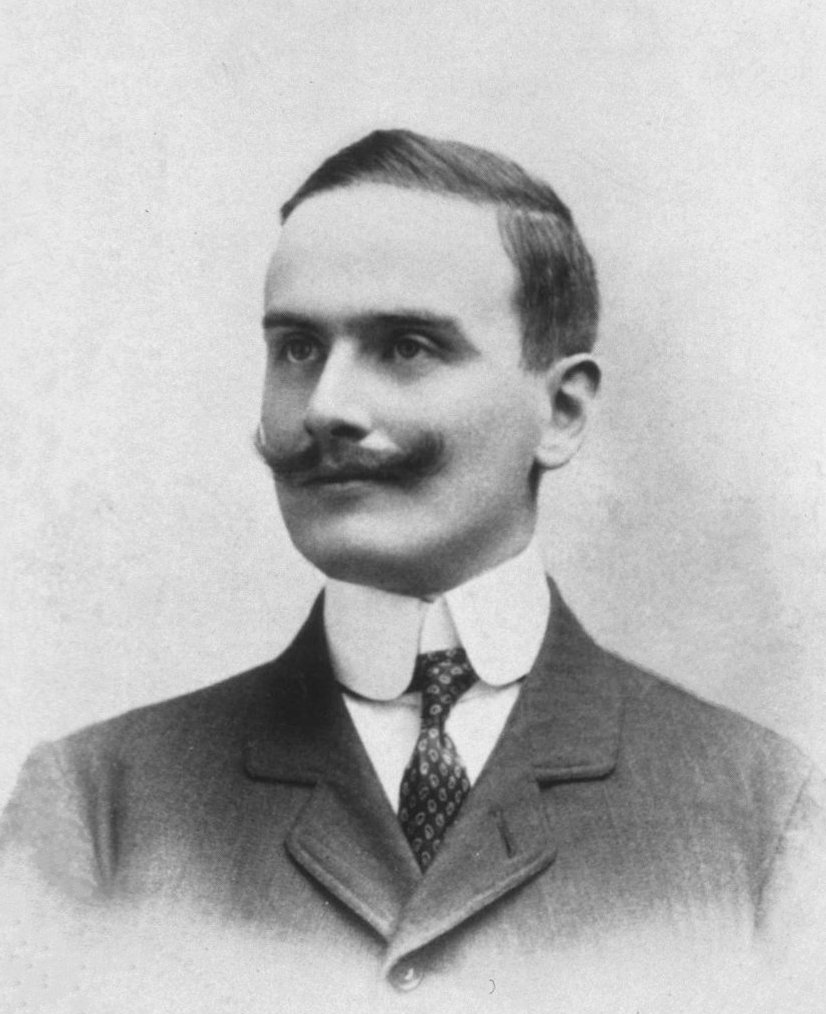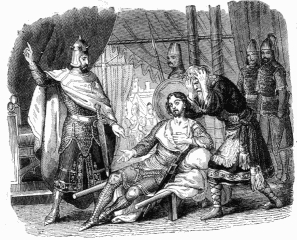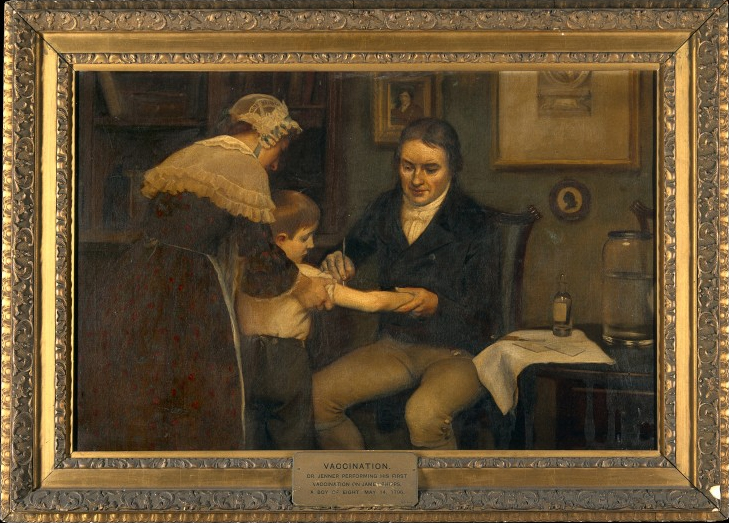|
Adelchi Negri
Adelchi Negri (16 July 1876 – 19 February 1912) was an Italian pathologist and microbiologist born in Perugia. He studied medicine and surgery at the University of Pavia, where he was a pupil of Camillo Golgi (1843–1926). After graduation in 1900, he became an assistant to Golgi at his pathological institute. In 1909 Negri became a professor of bacteriology, and the first official instructor of bacteriology in Pavia. On 19 February 1912 he died of tuberculosis at age 35. Negri performed extensive research in the fields of histology, hematology, cell biology, cytology, protozoology and hygiene. In 1903 he discovered the eponymous Negri bodies, defined as cytoplasmatic inclusion bodies located in the Purkinje cells of the cerebellum in cases of rabies in animals and humans. He documented his findings in an article titled ''Contributo allo studio dell'eziologia della rabbia'', published in the journal ''Bollettino della Società medico-chirurgica''. At the time, Negri mistakenly ... [...More Info...] [...Related Items...] OR: [Wikipedia] [Google] [Baidu] |
Adelchi Negri
Adelchi Negri (16 July 1876 – 19 February 1912) was an Italian pathologist and microbiologist born in Perugia. He studied medicine and surgery at the University of Pavia, where he was a pupil of Camillo Golgi (1843–1926). After graduation in 1900, he became an assistant to Golgi at his pathological institute. In 1909 Negri became a professor of bacteriology, and the first official instructor of bacteriology in Pavia. On 19 February 1912 he died of tuberculosis at age 35. Negri performed extensive research in the fields of histology, hematology, cell biology, cytology, protozoology and hygiene. In 1903 he discovered the eponymous Negri bodies, defined as cytoplasmatic inclusion bodies located in the Purkinje cells of the cerebellum in cases of rabies in animals and humans. He documented his findings in an article titled ''Contributo allo studio dell'eziologia della rabbia'', published in the journal ''Bollettino della Società medico-chirurgica''. At the time, Negri mistakenly ... [...More Info...] [...Related Items...] OR: [Wikipedia] [Google] [Baidu] |
Inclusion Bodies
Inclusion bodies are aggregates of specific types of protein found in neurons, a number of tissue cells including red blood cells, bacteria, viruses, and plants. Inclusion bodies of aggregations of multiple proteins are also found in muscle cells affected by inclusion body myositis and hereditary inclusion body myopathy. Inclusion bodies in neurons may be accumulated in the cytoplasm or nucleus, and are associated with many neurodegenerative diseases. Inclusion bodies in neurodegenerative diseases are aggregates of misfolded proteins (aggresomes) and are hallmarks of many of these diseases, including Lewy bodies in Lewy body dementias, and Parkinson's disease, neuroserpin inclusion bodies called Collins bodies in familial encephalopathy with neuroserpin inclusion bodies, inclusion bodies in Huntington's disease, Papp-Lantos inclusions in multiple system atrophy, and various inclusion bodies in frontotemporal dementia including Pick bodies. Bunina bodies in motor neurons are ... [...More Info...] [...Related Items...] OR: [Wikipedia] [Google] [Baidu] |
Adelchi Negri's Tomb, Monumental Cemetery, Pavia, Italy1
''Adelchi'' () is the second tragedy written by Alessandro Manzoni.Banham (1998, 678). It was first published in 1822. The main character is Adelchis, a Longobard prince torn by the inner conflict between his father Desiderio's will and his own desire for peace. Adelchis is the son of the last Lombard King, Desiderius. The action takes place between 772 and 774, the latter being the year in which Charlemagne, also a protagonist in the tragedy, brought about the end of the Lombard Kingdom. It was staged by Vittorio Gassman in 1960 and Carmelo Bene Carmelo Pompilio Realino Antonio Bene, known as Carmelo Bene (1 September 1937 – 16 March 2002), was an Italian actor, poet, film director and screenwriter. He was an important exponent of the Italian experimental theatre, avant-garde thea ... in 1984. References Sources * Banham, Martin, ed. 1998. ''The Cambridge Guide to Theatre.'' Cambridge: Cambridge UP. . {{DEFAULTSORT:Adelchi (Tragedy) 1822 plays Italian plays Pl ... [...More Info...] [...Related Items...] OR: [Wikipedia] [Google] [Baidu] |
Lombardy
Lombardy ( it, Lombardia, Lombard language, Lombard: ''Lombardia'' or ''Lumbardia' '') is an administrative regions of Italy, region of Italy that covers ; it is located in the northern-central part of the country and has a population of about 10 million people, constituting more than one-sixth of Italy's population. Over a fifth of the Italian gross domestic product (GDP) is produced in the region. The Lombardy region is located between the Alps mountain range and tributaries of the Po river, and includes Milan, the largest metropolitan area in the country, and among the largest in the European Union (EU). Of the fifty-eight UNESCO World Heritage Sites in Italy, eleven are in Lombardy. Virgil, Pliny the Elder, Ambrose, Gerolamo Cardano, Caravaggio, Claudio Monteverdi, Antonio Stradivari, Cesare Beccaria, Alessandro Volta and Alessandro Manzoni; and popes Pope John XXIII, John XXIII and Pope Paul VI, Paul VI originated in the area of modern-day Lombardy region. Etymology The name ... [...More Info...] [...Related Items...] OR: [Wikipedia] [Google] [Baidu] |
Malaria
Malaria is a mosquito-borne infectious disease that affects humans and other animals. Malaria causes symptoms that typically include fever, tiredness, vomiting, and headaches. In severe cases, it can cause jaundice, seizures, coma, or death. Symptoms usually begin ten to fifteen days after being bitten by an infected mosquito. If not properly treated, people may have recurrences of the disease months later. In those who have recently survived an infection, reinfection usually causes milder symptoms. This partial resistance disappears over months to years if the person has no continuing exposure to malaria. Malaria is caused by single-celled microorganisms of the ''Plasmodium'' group. It is spread exclusively through bites of infected ''Anopheles'' mosquitoes. The mosquito bite introduces the parasites from the mosquito's saliva into a person's blood. The parasites travel to the liver where they mature and reproduce. Five species of ''Plasmodium'' can infect and be spread by h ... [...More Info...] [...Related Items...] OR: [Wikipedia] [Google] [Baidu] |
Smallpox Vaccine
The smallpox vaccine is the first vaccine to be developed against a contagious disease. In 1796, British physician Edward Jenner demonstrated that an infection with the relatively mild cowpox virus conferred immunity against the deadly smallpox virus. Cowpox served as a natural vaccine until the modern smallpox vaccine emerged in the 20th century. From 1958 to 1977, the World Health Organization (WHO) conducted a global vaccination campaign that eradicated smallpox, making it the only human disease to be eradicated. Although routine smallpox vaccination is no longer performed on the general public, the vaccine is still being produced to guard against bioterrorism, biological warfare, and monkeypox.Anderson MG, Frenkel LD, Homann S, and Guffey J. (2003), "A case of severe monkeypox virus disease in an American child: emerging infections and changing professional values"; '' Pediatr Infect Dis J'';22(12): 1093–96; discussion 1096–98. The term ''vaccine'' derives from the Latin ... [...More Info...] [...Related Items...] OR: [Wikipedia] [Google] [Baidu] |
Virus
A virus is a submicroscopic infectious agent that replicates only inside the living cells of an organism. Viruses infect all life forms, from animals and plants to microorganisms, including bacteria and archaea. Since Dmitri Ivanovsky's 1892 article describing a non-bacterial pathogen infecting tobacco plants and the discovery of the tobacco mosaic virus by Martinus Beijerinck in 1898,Dimmock p. 4 more than 9,000 virus species have been described in detail of the millions of types of viruses in the environment. Viruses are found in almost every ecosystem on Earth and are the most numerous type of biological entity. The study of viruses is known as virology, a subspeciality of microbiology. When infected, a host cell is often forced to rapidly produce thousands of copies of the original virus. When not inside an infected cell or in the process of infecting a cell, viruses exist in the form of independent particles, or ''virions'', consisting of (i) the genetic material, i. ... [...More Info...] [...Related Items...] OR: [Wikipedia] [Google] [Baidu] |
Etiology
Etiology (pronounced ; alternatively: aetiology or ætiology) is the study of causation or origination. The word is derived from the Greek (''aitiología'') "giving a reason for" (, ''aitía'', "cause"); and ('' -logía''). More completely, etiology is the study of the causes, origins, or reasons behind the way that things are, or the way they function, or it can refer to the causes themselves. The word is commonly used in medicine (pertaining to causes of disease) and in philosophy, but also in physics, psychology, government, geography, spatial analysis, theology, and biology, in reference to the causes or origins of various phenomena. In the past, when many physical phenomena were not well understood or when histories were not recorded, myths often arose to provide etiologies. Thus, an etiological myth, or origin myth, is a myth that has arisen, been told over time or written to explain the origins of various social or natural phenomena. For example, Virgil's ''Aeneid'' is ... [...More Info...] [...Related Items...] OR: [Wikipedia] [Google] [Baidu] |
Paul Remlinger
Paul Remlinger (29 December 1871 – 9 March 1964) was a French physician and biologist born in Bertrange, Moselle. He studied medicine at the Val de Grâce military hospital, supporting his doctoral thesis in 1893 at the University of Lyon with a study on the heredity of tuberculosis. In 1896 he became head of the bacteriology laboratory in Tunis, followed by an assignment to the Constantinople Imperial Bacteriology Institute (1900). Soon afterwards he succeeded Maurice Nicolle (1862-1932) as director of the institute. In 1914 he relocated to Tangier, where he served at the newly founded Pasteur Institute. He would be associated with the Tangier institute until his retirement in 1957. During World War I he worked as a doctor at Argonne, where he performed research of bacillary dysentery with Julien Dumas (1884-1965). Remlinger was a leading authority on rabies and rabies vaccination. In 1903 he demonstrated that the causative agent of rabies was a filterable virus. He was a ... [...More Info...] [...Related Items...] OR: [Wikipedia] [Google] [Baidu] |
Protozoa
Protozoa (singular: protozoan or protozoon; alternative plural: protozoans) are a group of single-celled eukaryotes, either free-living or parasitic, that feed on organic matter such as other microorganisms or organic tissues and debris. Historically, protozoans were regarded as "one-celled animals", because they often possess animal-like behaviours, such as motility and predation, and lack a cell wall, as found in plants and many algae. When first introduced by Georg Goldfuss (originally spelled Goldfuß) in 1818, the taxon Protozoa was erected as a class within the Animalia, with the word 'protozoa' meaning "first animals". In later classification schemes it was elevated to a variety of higher ranks, including phylum, subkingdom and kingdom, and sometimes included within Protoctista or Protista. The approach of classifying Protozoa within the context of Animalia was widespread in the 19th and early 20th century, but not universal. By the 1970s, it became usual to require th ... [...More Info...] [...Related Items...] OR: [Wikipedia] [Google] [Baidu] |
Parasite
Parasitism is a close relationship between species, where one organism, the parasite, lives on or inside another organism, the host, causing it some harm, and is adapted structurally to this way of life. The entomologist E. O. Wilson has characterised parasites as "predators that eat prey in units of less than one". Parasites include single-celled protozoans such as the agents of malaria, sleeping sickness, and amoebic dysentery; animals such as hookworms, lice, mosquitoes, and vampire bats; fungi such as Armillaria mellea, honey fungus and the agents of ringworm; and plants such as mistletoe, dodder, and the Orobanchaceae, broomrapes. There are six major parasitic Behavioral ecology#Evolutionarily stable strategy, strategies of exploitation of animal hosts, namely parasitic castration, directly transmitted parasitism (by contact), wikt:trophic, trophicallytransmitted parasitism (by being eaten), Disease vector, vector-transmitted parasitism, parasitoidism, and micropreda ... [...More Info...] [...Related Items...] OR: [Wikipedia] [Google] [Baidu] |
Who Named It
''Whonamedit?'' is an online English-language dictionary of medical eponyms and the people associated with their identification. Though it is a dictionary, many eponyms and persons are presented in extensive articles with comprehensive bibliographies. The dictionary is hosted in Norway and maintained by medical historian Ole Daniel Enersen Ole Daniel Enersen (born March 14, 1943, in Oslo, Norway) is a Norwegian climber, photographer, journalist, writer, and medical historian. In 1965 he made the first ascent of the Trollveggen mountain in Romsdalen, Norway, along with Leif Norman .... References External links * Medical websites Medical dictionaries Eponyms {{online-dict-stub ... [...More Info...] [...Related Items...] OR: [Wikipedia] [Google] [Baidu] |





